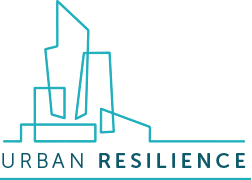Urban water resilience focuses on the ability of urban populations to manage a water shock and cope with water stress. Hidden within this statement are important questions as to how much water is needed to constitute coping and what is this water for?
At the heart of questions surrounding water resilience is the critical debate about what actually constitutes resilience. Is it about maintaining the status quo, whereby populations are able to manage shocks to minimise any interruption to water supplies? If so how is this to be achieved? If prioritising human demand is the preferred option then this may have ramifications for the amount of water available for other users (particularly non-human users such as animals or plant-life). Alternatively, should considerations of resilience be more forward thinking, seeking to adapt to a ‘better’ balance between demands and the available resource? If so, this will raise important normative questions as to the weight to be accorded to different uses.
Conventionally, in western societies, water supplies have been seen as a commodity, a resource to be managed and exploited by humans to meet their social and economic needs. As demands have increased, particularly with rapidly rising urban populations and societal expectations, so technologies, governance models and institutional arrangements have evolved to deliver reliable quantities of bulk water supplies. Over time this has resulted in the expectation that clean water supplies will be available to everyone in a community at all times. A critical debate in this model of water supply has focused on ensuring that an ability to pay does not unduly influence access to water. In some cases this has led to flat rate charges regardless of the quantity of water used, in others a social tariff has been introduced, whereby an initial quantity of water is available at low cost, with higher charges for uses above this level. Introducing tiered charges does, however, require monitoring of the amount of water being used. Crucially, this model has been exported around the world as the standard for water supply. It also underpins the UN’s declaration of a ‘Human Right to Water’, which, amongst other things, provides for a minimum requirement for all individuals.
In 2010, the UN resolved that:
Every person has the right to between 50 and 100 litres of water per day for personal and domestic use, from a source that is within 1,000m of their house and does not take more than 30 minutes to collect. The cost of this water should not exceed 3% household income.
(Resolution A/RES/64/292 United Nations General Assembly, July 2010)
In this model, is a resilient water supply one that can maintain the minimum standard agreed by the UN or, alternatively, is it one that can continue to supply the quantities of treated water that were available prior to whatever shock has caused a fluctuation in supplies?
One of the challenges in determining what constitutes a resilient outcome is the range of competing calls upon available water resources. As a society we increasingly accept that non-human demands for water have a legitimate right to a share of water. In an extension of this right we also see examples of where rivers are conferred a legal personality in order to protect the welfare of riverine organisms and other lifeforms that depend on particular bodies of water.
Not only does this raise serious ethical questions about how decisions are made, and on whose behalf, it also adds additional complexity to the consideration of what counts as a resilient outcome. In part, the challenge comes about because, as a society, we are wedded to the orthodoxy that water is there to be used. Our society is based on the fundamental premise that through managing water supplies we can provide everyone with more or less how much water they want to use at a reasonable cost. Yet, we also recognise that we are now approaching the limits of that convention, particularly when we also consider the needs of future generations.
Perhaps, in our consideration of what counts as water resilience we now need to also consider approaches that are founded on longer-term socio-ecological thinking, rather than the engineering-led technology-driven paradigm that prevails at present. This might consider that the current water take in particular places does not constitute a ‘resilient’ outturn in the longer-run, rather than viewing this as a floor against which to measure short-term resilience.
Dr. Adrian Healy is a UKRI Future Leaders Fellow. All views expressed here are his own.
